Crafting the Perfect Cup: Mastering Hot Tea with Bags


Intro
When it comes to brewing the perfect cup of hot tea, there is a world of flavors and experiences waiting to unfold with just a simple tea bag. It's far more than a quick throw of hot water onto a few dried leaves; the process can transform an ordinary moment into an extraordinary ritual. This guide is designed to take you by the hand, walk you through each step, and help you navigate the nuances that distinguish a mediocre cup from one that warms the soul.
In this journey, we will take a closer look at the whole shebang—everything from the essential factors that play into preparing tea, like how to choose your tea bags wisely, to controlling the water temperature for optimal flavor extraction. It isn't just about dunking a bag in boiling water and calling it a day; there's an art to it that deserves time and attention. So, sit back and prepare to elevate your tea-making skills to new heights.
Recipe Overview
What’s Brewing?
Let’s roll up our sleeves and dive right in. Making hot tea with tea bags starts with more than just the brewing process—it’s about selecting the right ingredients and understanding how each one contributes to the final product.
Cuisine Type
Although tea transcends borders, this guide leans into a classic English tradition, where tea is more than just a drink; it's a ritual steeped in culture. However, let's not forget that every corner of the world has its own take on how to prepare and enjoy this beloved beverage.
Ingredients List
Detailed Ingredient Breakdown
- Tea Bags: Choose a high-quality brand. Early Grey, Chamomile or Green Tea all have distinct flavors and health benefits.
- Water: Fresh, filtered water is key. The purity of your water can make or break the flavor of your tea.
- Optional: Sweeteners like honey or sugar, and milk or lemon for added richness.
Substitutions for Dietary Needs
If you’re watching your sugar intake, consider stevia or agave syrup as alternatives. Those preferring non-dairy options can use almond or oat milk instead of cow's milk.
Tea may seem simple, but as we delve deeper into the techniques that enhance the experience, you'll start to appreciate what truly makes a good cup great. No one-size-fits-all formula exists in the world of tea, so let's personalize this experience even further.
Understanding Tea Bags and Their Varieties
When embarking on the journey of crafting a delightful cup of tea, it's wise to first grasp the different nuances behind tea bags. Understanding the varieties available isn't just a matter of choice; it's an essential step that influences the flavor, aroma, and overall experience of your tea. The category of tea bags encompasses a spectrum of types and flavors, each uniquely contributing to the broad tapestry of tea culture. This section serves as a guide through the world of tea bags, venturing into their types and the diverse flavors they can offer.
Types of Tea Bags
Traditional Paper Bags
Traditional paper tea bags are often what come to mind when you think about brewing tea. These simple, yet effective vessels have certain characteristics that make them a staple in many households. They are typically made from porous paper, allowing water to flow freely through the bag to extract the essential oils and flavors of the tea.
One significant aspect of traditional paper bags is their convenience. You don’t need to worry too much about cleanup afterward. Just steep and dispose! However, they may not offer the same infusion quality as other types due to their limited space for the tea leaves. The smaller size can sometimes restrict the full release of flavors, especially with higher quality teas. Despite this, their popularity persists, particularly for everyday brewing, mainly because they are widely available and a reliable go-to for a quick cup.
Silken Pyramid Bags
Silken pyramid bags present a more modern twist on traditional tea brewing. Their unique shape allows for more room for the tea to move within the bag, which can lead to a greater expression of flavors. Made from finer mesh materials, they often resemble a little pyramid, providing not just functionality but also an aesthetic appeal.
The standout feature of silken pyramid bags is the improved infusion process. They are particularly beneficial for premium loose-leaf teas. The larger space allows tea leaves to unfurl properly, releasing aromatic compounds that can significantly enhance your tea’s flavor. However, one could argue that they tend to be pricier than traditional options, but many tea aficionados consider them worth the investment for the refined flavor they deliver.
Reusable Loose Leaf Bags
Reusable loose leaf bags are an eco-friendly alternative for those who are serious about their tea. These bags are typically made from cloth or other sustainable materials, allowing you to use them multiple times. They provide the flexibility to choose your tea while eliminating waste associated with single-use bags.
A key characteristic of reusable loose leaf bags is their capacity for customization. You can experiment with different types or blends of tea without being confined to pre-packaged options. However, there's a slight learning curve when it comes to proper cleaning and storage to maintain their longevity. While there might be a bit more maintenance involved, the benefits of flavor and sustainability can greatly align with those looking to deepen their tea-making practice.
Flavors and Blends
Black Tea Blends
Black tea blends are a cornerstone of tea drinking culture. Whether it's a classic English Breakfast or an iron-rich Assam, these blends provide robust flavor profiles accompanied by caffeine that can invigorate your morning routine. Each blend offers something distinct, often featuring a mixture of different black teas that play well together to provide depth and richness to the brew.
These blends shine when infused properly, but navigating the nuances between different varieties can yield more rewarding results. The primary benefit of black tea blends is their versatility against diverse palates, whether enjoyed plain or with milk and sugar. However, some people might find them too potent for their taste.
Herbal Infusions
Herbal infusions have become remarkably popular among those seeking caffeine-free alternatives. Unlike traditional teas, herbs offer an array of flavors, from the soothing chamomile to the invigorating peppermint. Often blended with various spices and fruits, these infusions provide an opportunity for exploration.
The most appealing characteristic of herbal infusions is their health benefits, often paired with delightful flavors that soothe the mind and body. They can be enjoyed at any time of day, especially as a relaxing evening choice. On the downside, some may overlook herbal infusions because their flavor profiles can sometimes lack the depth offered by traditional teas, but that just depends on personal preference.
Green Tea Varieties
Green tea varieties are renowned for their health benefits, high in antioxidants and beneficial compounds. From the grassy notes of Sencha to the umami flavors of Matcha, green tea provides a subtlety and complexity loved by many.
What makes green tea unique is the delicate processing it undergoes, preserving its natural flavor and nutrients. The benefits are well-documented—from boosting metabolism to providing natural relaxation. However, it is essential to note that green tea can be finicky, with strict requirements in temperature and steeping time to avoid bitterness.
Understanding these diverse facets of tea bags and flavors will not only enhance your brewing practice but also allow you to appreciate the intricate world of tea like never before.
Selecting Quality Tea Bags
Choosing quality tea bags is crucial for anyone aspiring to brew a delightful cup of tea. Not all tea bags are created equal, and the type, freshness, and source of your tea can significantly influence the flavor and overall experience. Not only does selecting quality tea bags lead to better taste, but it also enhances the health benefits associated with drinking tea. Quality tea bags ensure a pleasant aroma and a satisfying sip, transforming the routine of tea drinking into something closer to art.
Identifying Freshness
Expiration Dates
Expiration dates are a key aspect of ensuring the freshness of tea bags. Every tea bag has a shelf life, typically printed on the packaging, which helps you determine how long the tea will retain its optimal flavor and aroma. An expired tea bag won’t pack the same punch as a fresh one; stale tea can taste flat or lifeless. Checking expiration dates becomes vital because, unlike wine, tea does not improve with age. So, make it a point to glance at this date while choosing your tea, as a fresher product guarantees a more robust cup.
Another significant detail is that freshness is not just about the expiration date but also about how the tea is stored. Ideally, tea should be kept in a cool, dark, and dry place. When buying tea bags close to their expiration, you might find that they were sitting on a store shelf for too long, which could compromise their quality. Ultimately, picking tea bags with longer shelf life contributes to a much more satisfying tea experience.
Packaging Indicators
Packaging indicators can give you a wealth of information regarding the quality and freshness of tea bags. From foil pouches to biodegradable packaging, well-designed containers often reflect a brand's commitment to maintaining freshness. Foil or vacuum-sealed packaging protects tea from light, moisture, and air, which can quickly degrade the quality. This means that a well-packaged tea bag retains more flavor and aroma, enhancing your brewing experience.
Moreover, many brands also include freshness seals designed specifically to indicate whether a package has been opened or damaged. A fresh seal serves as a guarantee that the tea is in optimal condition. When wandering down the tea aisle, focus on brands that prioritize quality packaging, as it signifies that they value the consumer's experience and product integrity.
Sourcing from Reputable Brands
Researching Brand Reputation
Researching brand reputation is another essential step in selecting tea bags. A brand with a history of quality and consumer trust is more likely to offer a superior product. Dive into the story behind your favorite tea brands, check customer reviews, and explore their sourcing practices. This way, you can ascertain whether the brand prioritizes ethical sourcing and quality over mere profit. Good brands often share their story and practices, demonstrating transparency and inviting consumers to take part in their tea journey.
A strong brand reputation often comes with consistent flavor profiles and commitment to quality. Customers can experience disappointment with lesser-known brands that may not have established quality control practices. Opting for trusted brands provides reassurance, not just about flavor but also about ethical practices and ingredient sourcing.
Examining Ingredients List
Examining the ingredients list is a simple yet powerful way to evaluate tea bag quality. A quality tea bag should primarily contain tea leaves, herbs, or spices that you would recognize. If you see long lists filled with additives, artificial flavors, or fillers, it could be a signal to steer clear. High-quality brands essentially keep it simple, so when you read the ingredients, they should be straightforward and transparent.
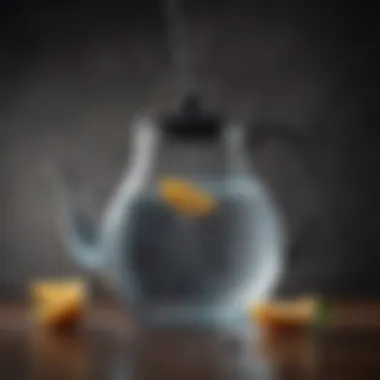
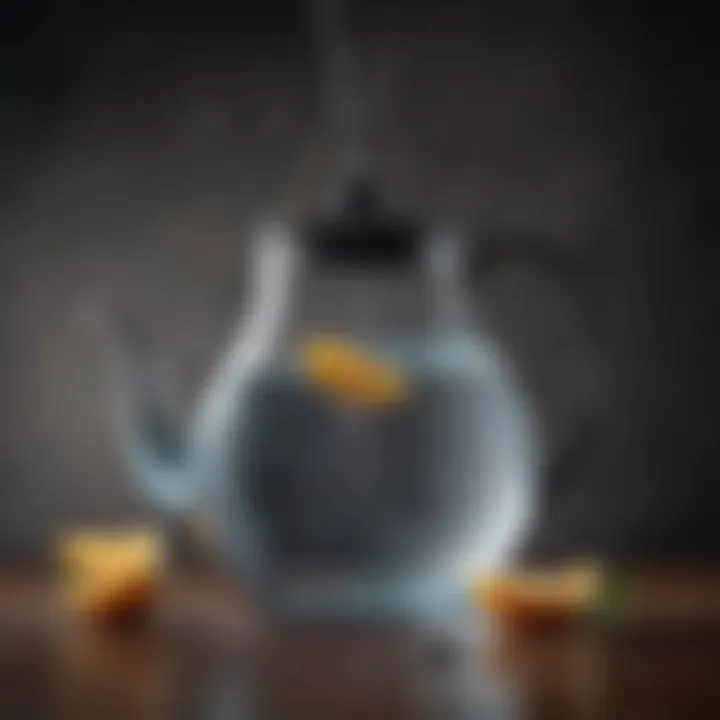
Taking time to scrutinize the ingredients can lead you to discover unique blends that accommodate personal preferences, as well as any allergens or preferences such as organic or non-GMO options. This holistic approach solidifies not only your enjoyment of the tea but also ensures that you're drinking something aligned with your own health values.
Remember, clariifcation on what's inside your tea bags is just as important as the tea’s flavor itself.
Opting for brands that invest time in crafting their blends, reflected through their ingredient lists, often leads to a far richer and more exciting tea drinking experience.
The Role of Water in Tea Preparation
Water, often dubbed the unsung hero of tea making, plays a pivotal role in shaping the flavors and nuances of your brew. It’s not just a simple ingredient; it’s a crucial element that can elevate or diminish the quality of your hot tea. Selecting the right type of water and ensuring its appropriate temperature can greatly influence the overall experience. This section will delve into the critical aspects of water quality and temperature considerations, offering insights that every tea lover should consider.
Importance of Water Quality
Types of Water: Tap, Filtered, Spring
When diving into tea preparation, the type of water you use can’t be overlooked. Tap water is widely accessible and certainly convenient. However, its characteristics can vary significantly depending on local sources. Some tap waters, especially in urban areas, could carry an unwanted taste due to chemical treatments or mineral content. If you're after clarity in flavor, filtered water is a smart choice. It removes impurities and can enhance the floral notes of your tea, bringing out flavors you might otherwise miss.
Spring water, on the other hand, is nature's gift straight from the source. It usually retains minerals that can beautifully contribute to the tea's taste. Spring water often tastes fresher and cleaner than tap varieties, making it particularly popular among tea aficionados who appreciate nuanced profiles. However, it might carry a higher price tag and isn't always as easy to find.
In summary, the type of water you use can affect not only the flavor but also the overall enjoyment of your tea experience. Consider your options carefully:
- Tap Water: Convenient, but check for taste and mineral content.
- Filtered Water: Higher quality, removes impurities, enhances flavor.
- Spring Water: Fresh and delightful, but may be pricier or harder to source.
Impact of Chlorine and Minerals
Chlorine and minerals are two companions in tap water that can create chaos in the kitchen. Chlorine, often added to treat municipal water, gives off a distinct smell and flavor that can overwhelm your tea. If the water doesn't taste good on its own, it's unlikely to produce a pleasant brew. Conversely, minerals such as calcium or magnesium, while necessary in small amounts, can alter the taste of your tea, making it somewhat bitter or dull.
Minimizing chlorine's presence can be as simple as letting tap water sit uncovered overnight. This allows the gas to escape, leading to a cleaner taste. You can also resort to using a water filter designed to remove chlorine effectively.
The implications of chlorine and mineral content are significant. A well-balanced water source contributes depth to your tea, whereas unfiltered choices can lead to a flat experience. Keep the following in mind:
- Chlorine: Can ruin taste; consider letting water sit or filtering.
- Minerals: Can add or detract; opt for a balance for best results.
Water Temperature Considerations
Optimal Temperatures for Different Teas
Temperature isn’t just a number; it’s a game-changer in the world of tea. Different types of tea thrive at specific temperatures, which can either coax out delicate flavors or lead to bitterness when the heat is too high. Black teas generally prefer boiling or near-boiling water, often between 200-212°F (93-100°C). Green and white teas, however, demand a gentler touch, ideally steeping in water that's about 160-185°F (71-85°C).
This temperature specification ensures that the leaf opens gently, releasing its essence without being scorched. In contrast, herbal teas are usually robust enough to handle hot water but benefit from a longer steeping time in just-boiled water. Each tea brings its own character, and matching water temperature with these needs is crucial for the love of tea.
- Black Tea: 200-212°F (93-100°C)
- Green Tea: 160-185°F (71-85°C)
- Herbal Tea: Just boiled for strength
Using a Thermometer for Precision
Ah, the trusty thermometer! An often underestimated tool in tea brewing, it's the unsung assistant to the perfectionist in the kitchen. Even though instant kettles that have preset options for different teas are great, a simple thermometer can provide an additional layer of accuracy.
Using a thermometer allows you to be sure that water is at the exact temperature recommended for your chosen tea. The consequences of not monitoring this can be dire: it's not just about missing flavor nuances, but it can also lead to an overall disappointing cup if a delicate tea gets scalded. So, instead of guessing, use a thermometer.
To wrap it up, proper water temperature ensures that you reap the full benefits of your chosen tea. Not only does it safeguard against extracting unpleasant flavors, but it also embraces the depth and subtleties of the leaves. The path to tea mastery involves vigilance and precision, so a thermometer might just be the tool you didn’t know you needed.
"Precision in temperature transforms the art of brewing into a delightful science. Stay serious about your water."
The Brewing Process
When it comes to crafting that quintessential cup of tea, the brewing process is absolutely key. This step is where all the pieces of the puzzle come together, turning simple tea bags into a fragrant elixir that both soothes and delights. The precision of this stage extends far beyond merely dunking a tea bag in hot water. It envelops a symphony of elements—boiling water, steeping techniques, and the careful choreography of flavors.
Boiling Water
Methods: Kettle, Stovetop, Electric
Boiling water may seem straightforward, but the method you choose can significantly affect the final taste in your cup. Let’s break down the options:
- Kettle: These classical devices offer efficiency and a nostalgic flair. They often come equipped with a whistle to signal the water’s readiness. A kettle allows for quick boiling and can be easily filled directly from the faucet. However, some kettles can retain a metallic taste if not properly cared for.
- Stovetop: If you’re the kind who enjoys the ritual of heating water slowly, then a stovetop pot may be your best bet. It grants control over temperature the old-fashioned way but can take longer than electric varieties. Just keep an eye on it, or you might end up with a pot that’s dry as a bone!
- Electric: Nowadays, an electric kettle is a popular choice for many tea aficionados. They offer the convenience of temperature settings, ensuring optimal hotness for various types of tea. Some models include a designated setting for green tea, which doesn’t require boiling water. The drawback? These kettles can be pricier and require an electric outlet.
The boiling method you choose can reflect how you enjoy the whole process. Each method possesses its unique characteristics, yet ultimately contribute to achieving the right infusion.
Steeping Techniques
Steeping Time Guidelines
Steeping time is where art meets science in tea making. Different teas demand different durations to unlock their unique flavors.
- Short Steeping (1-3 minutes): Delicate teas like green or white tea are sensitive to prolonged exposure. Steeping them for too long can yield bitter notes, overshadowing their natural sweetness.
- Medium Steeping (3-5 minutes): Black teas are more forgiving, with a range that generally thrives in this time window. Adjusting the steeping duration can either soften the flavors or intensify them to suit your palate.
- Long Steeping (5+ minutes): Herbal teas might require a bit more patience, often benefitting from longer immersion to fully unleash their robust flavors. However, some herbs can become overly tannic if steeped too long.
"Timing is everything—just a minute can transform your brew from blissful to bitter."
Proper Bag Placement
How you place your tea bag also influences the brewing outcome. Positioning the bag correctly ensures that all those delightful flavors seep into the water as effectively as possible.
- Bag Orientation: Hanging the bag in an upright position allows for better water circulation around the leaves inside, enhancing the flavor extraction.
- Avoiding Overcrowding: If you're brewing more than one bag, give them some space. Overlapping can lead to weak extraction and subpar results.
- Timing for Removal: Pay attention to the timing. Once you detect the desired infusion level, fish that bag out. Leaving it in too long can cause the cup to become overly strong and harsh.
As you explore these elements of the brewing process, remember that they offer a canvas for your creativity in tea making. And the results will speak volumes, yielding a level of satisfaction that only a well-made cup can provide.
Enhancing the Drinking Experience
Enhancing the drinking experience of tea goes beyond just brewing it right; it’s about tailoring each cup to reflect personal tastes and preferences. This section focuses on ways tea enthusiasts can elevate their tea-drinking ritual. By enhancing flavor and aroma, one can turn a simple hot beverage into an invigorating experience. The small additions, like sweeteners, dairy, or fresh herbs, can significantly impact satisfaction. Here, we will elaborate on specific methods to achieve this.
Flavor Customization
Adding Sweeteners
Adding sweeteners to tea is a common practice, and rightly so. Sweeteners such as sugar, honey, or agave nectar can balance the natural bitterness found in certain teas, especially black teas. The key characteristic here is how sweetness can transform the flavor profile of the tea, making it more palatable for those who may be sensitive to bitterness.
Sweetener options bring their unique advantages. For instance, honey is not just a sugar substitute; it infuses a floral undertone, making the tea taste more complex. However, a downside could be the residue it leaves behind or the impact on one's health, depending on the quantity. It's crucial to find the right amount that elevates the tea’s flavor without overpowering it.
Incorporating Dairy or Alternatives
Incorporating dairy or alternatives, like milk or non-dairy creamers, can add a rich texture to tea. This method is especially popular in chai and other spiced blends, where the creaminess complements assorted spices and flavors. The main benefit of adding dairy is that it softens sharp flavors, creating a more harmonious cup.
Yet, there's a caveat: some individuals may be lactose intolerant or prefer vegan options. Non-dairy alternatives, like almond or oat milk, have become widely accepted and they can also reduce calories and fat content while maintaining creaminess. In this context, understanding preferences becomes essential.
Creating Aromatic Variations
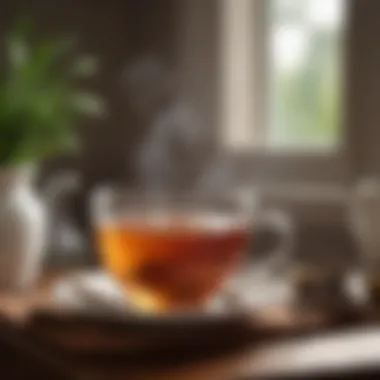
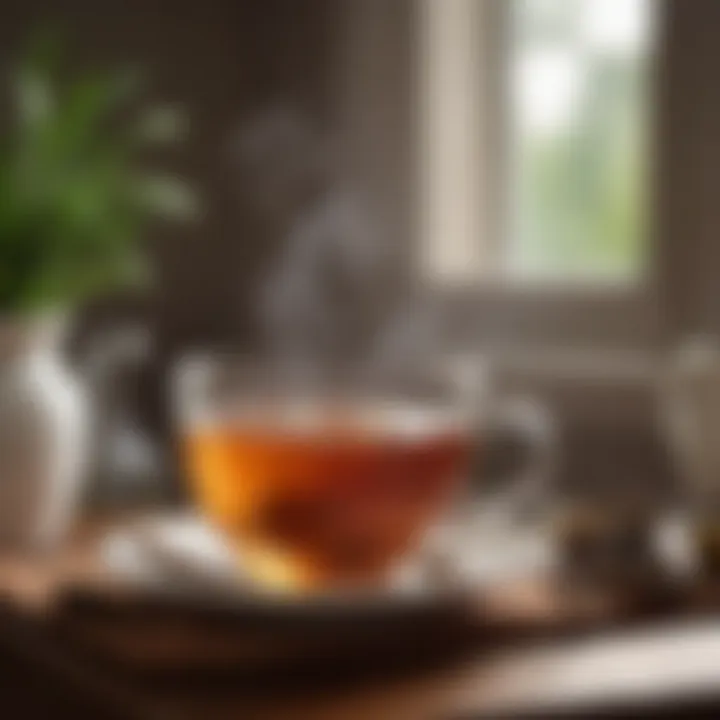
Using Fresh Herbs
Using fresh herbs can introduce a lively freshness and complexity to a cup of tea. Mint, basil, and rosemary are just a few examples of herbs that can be added during the steeping process. The key here lies in the bracing aroma and flavor that fresh herbs impart. They are often seen as a beneficial addition because they not only enhance taste, but also lend some potential health benefits.
These herbs can, however, intensify flavors, which may not be to everyone’s liking. Experimentation is fundamental, as too much might overwhelm the tea's original characteristics. Understanding the balance and how each herb interacts with different tea bases is crucial to mastering this technique.
Blending with Fruit Zests
Blending with fruit zests is another exciting avenue for tea enhancement. Citrus peels like lemon, orange, and lime offer a zesty kick that can brighten dull flavors. This method is particularly effective with herbal and green teas, elevating the freshness and making them taste more lively.
The distinctive feature of fruit zests is their ability to add both fragrance and acidity. They are favored for their natural sugars, which can improve the overall flavor profile. Yet, one must be cautious not to overdo it, as excessive zest can lead to a sharp, unbalanced taste that can overshadow the delicate flavors of the tea base.
In summary, enhancing the drinking experience of tea can considerably transform its enjoyment. With flavor customization and aromatic variations, each sip can become a delightful exploration. All it takes is a bit of creative experimentation and the courage to adjust things to one’s liking.
Health Benefits of Tea
Understanding the health benefits of tea is essential for anyone interested in both the art and science of tea making. Beyond its comforting qualities, tea is often praised for its numerous health advantages, which can play a significant role in enhancing one's wellbeing. Each type of tea offers unique properties, but they predominantly share some common benefits that are worth noting.
Antioxidant Properties
Polyphenols and Their Effects
Polyphenols are compounds found abundantly in tea that provide various health benefits. These antioxidants are known for their ability to combat oxidative stress, which is a significant contributor to chronic diseases and aging. They work by neutralizing free radicals in the body and thus protecting cells from damage. The high concentration of polyphenols, especially in green tea, makes it a popular choice among health enthusiasts and is often touted for its
Cancer prevention potential: Research suggests that the presence of polyphenols can inhibit cancer cell growth.
- Cardiovascular benefits: Regular consumption may help in lowering blood pressure and improving heart health.
One unique aspect of polyphenols is their ability to improve gut health by promoting the growth of good bacteria in the digestive system, further contributing to an overall healthier lifestyle. Consumers should note, however, that the concentration of polyphenols varies significantly among different types of tea bags, with loose-leaf teas generally having higher amounts than mass-produced tea bags.
Comparative Benefits Across Tea Types
There are notable distinctions in the polyphenol content between various tea types, which can influence their overall health benefits. For example, black tea, green tea, and oolong tea all contain unique blends of polyphenols that contribute to their individual characteristics.
- Green Tea: High in catechins, which are a particular type of polyphenol known for their weight loss benefits.
- Black Tea: Contains theaflavins and thearubigins, which may support heart health and cholesterol management.
This comparative landscape highlights why it can be beneficial to explore different teas based on their polyphenol profiles. However, saturated flavors in heavily processed tea bags might obscure the natural benefits found in teas like premium loose-leaf varieties, potentially limiting the advantages one could gain from the healthy compounds.
Caffeine and Relaxation
Understanding Caffeine Levels
Caffeine is another aspect that should be examined closely, especially for those who enjoy tea but are cautious about their caffeine intake. The levels of caffeine in tea vary widely depending on factors such as the type of tea, the steeping time, and even the temperature of the water used.
- Black Tea: Generally contains the highest amounts, making it a preferred wake-up brew for many.
- Green Tea: Offers a moderate amount, perfect for those looking for a gentler pick-me-up without jitters.
- Herbal Tea: Most herbal teas are caffeine-free, making them an excellent choice for evening enjoyment.
An interesting facet of caffeine in tea is that while it can act as a stimulant, the presence of the amino acid L-theanine tends to create a calming effect, which is often described as a state of "alert relaxation." This characteristic allows tea to provide a balanced experience, making it easier on the nerves compared to coffee.
The Role of Herbal Teas
When it comes to relaxation, herbal teas come to the forefront. While traditional teas like black and green are derived from the Camellia sinensis plant, herbal teas encompass a broad range of infusions made from various herbs and botanicals. These teas can provide soothing properties and are especially popular in health circles for their comforting effects.
- Chamomile: Renowned for its sleep-inducing qualities.
- Peppermint: Known to aid digestion and promote relaxation.
Herbal teas serve as a contemplative option for those seeking benefits beyond just the caffeine-related effects. For individuals looking to unwind, incorporating herbal selections can offer both mental and physical relaxation, thereby enhancing the tea-making experience.
"With tea, the ritual is just as important as the result; it’s a comforting embrace in a cup, regardless of the type you choose."
In summary, understanding the health implications not just enriches the experience of tea-making but also invites exploration into the various benefits of the blend. Engaging with tea in a mindful way adds a layer of appreciation for what lies beyond mere flavor—a true gift to one’s health.
Exploring Cultural Aspects of Tea
Tea, more than just a beverage, serves as a bridge connecting people across different cultures. As we delve into Exploring Cultural Aspects of Tea, it's vital to acknowledge how tea transcends mere consumption, becoming a ritual imbued with significance. It nourishes social bonds and carries deep historical roots. Examining these traditions not just informs us about tea-making, but enriches our experience, allowing us to appreciate the context in which our favorite drink exists.
Global Tea Traditions
British Afternoon Tea
British Afternoon Tea represents a unique cultural phenomenon that enriches the overall topic of tea-making. Originating in the early 19th century, this practice has become synonymous with English culture. What sets British Afternoon Tea apart is its structured format:
- Traditionally enjoyed between 3 pm and 5 pm
- Involves a delightful assortment of finger sandwiches, scones with clotted cream, and an array of pastries, all served with fine tea
This particular ritual is a popular choice in the article because it emphasizes the social aspect of tea drinking. The key characteristic of Afternoon Tea is its emphasis on creating an elegant, relaxed atmosphere. It's not merely about drinking but savoring a moment—bringing friends and family together. One unique feature of this tradition is its variety, allowing tea enthusiasts to experiment with different blends alongside a smorgasbord of treats.
However, it does come with some disadvantages, such as requiring a level of formality that might not suit everyone's preference for a casual tea experience.
Chinese Gongfu Tea Ceremony
On the other end of the spectrum, the Chinese Gongfu Tea Ceremony offers a distinct approach to tea preparation that merits discussion. This ceremony involves a meticulous, artful process of brewing, characterized by:
- Repeatedly steeping small amounts of tea leaves
- Utilizing specialized ware that focuses on enhancing flavor and aroma
So, why is the Gongfu Tea Ceremony a relevant theme in this article? Its attention to detail and reverence for the tea leaves represent a philosophical connection to nature and personal mindfulness. The key characteristic is its elegance in simplicity, as it encourages participants to appreciate each step—from selecting the tea to watching the infusion process. Moreover, this unique feature underscores the bond between the brewer and the tea, fostering a moment of tranquility amidst a hectic life.
That said, the Gongfu method might seem complex for those looking for a straightforward brewing experience.
Modern Tea Trends
Specialty Tea Bars
In a modern twist, Specialty Tea Bars have emerged as vibrant hubs for both tea lovers and novices alike. These establishments bring creativity and innovation to the tea experience, offering a diverse range of options that interest tea aficionados.
Unlike traditional tea shops, specialty tea bars focus on:
- Unique blends and seasonal offerings
- Interactive tasting sessions
The key characteristic of these venues is their emphasis on community and experimentation, making them beneficial for this article. They allow individuals to discover various flavors while exploring how tea can fit into modern lifestyles. One unique advantage is that they often feature baristas trained in tea preparation, ensuring that customers receive a quality experience every time.
However, this trend can also be perceived as commercialized, steering some traditionalists away.
Tea Pairing with Food
The art of Tea Pairing with Food is another modern trend that enhances the tea experience. This practice involves thoughtfully combining tea with various dishes to complement flavors.
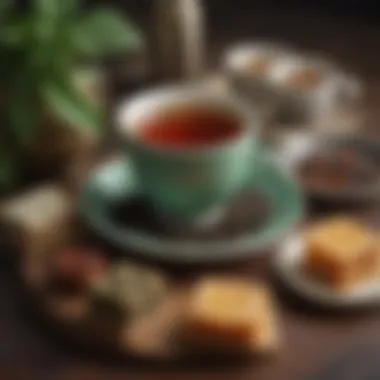
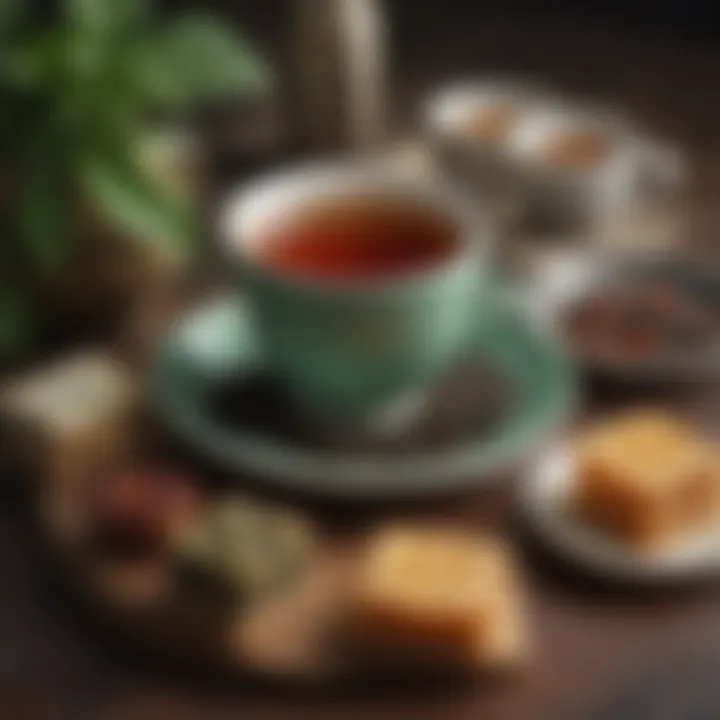
The key characteristic of this concept is its focus on balance and harmony, which adds a culinary dimension to tea. This makes it a popular choice in the article as it invites exploration beyond conventional drinking. For example, pairing a delicate green tea with sushi can enhance both the dish and the drink, providing a richer dining experience. On the flip side, pairing can be intimidating to those unfamiliar with flavor profiles.
"Exploring cultural aspects of tea enriches the act of drinking, transforming it into a shared ritual."
Troubleshooting Common Issues
When it comes to crafting that perfect cup of tea, a few hiccups can undoubtedly throw a wrench in the gears. Understanding the potential pitfalls can help tea lovers navigate the tea-making process with finesse. Common issues like oversteeping or a disappointment in flavor not only detract from the satisfaction of enjoying a cuppa, but they also provide learning opportunities. By addressing these issues head-on, you can refine your technique, leading to greater enjoyment and mastery of the art of brewing tea.
Oversteeping and Bitterness
Identifying Signs of Oversteeping
Oversteeping is like leaving a guest waiting too long at the door; it just tends to ruin the experience. When tea is left in hot water for too long, it often becomes overly bitter and astringent. Some key signs of oversteeping include a stark color change; if your tea looks more akin to a murky swamp than a delightful brew, you might have pushed it too far. The aroma can also turn sour, which is usually not something one wants from a cup of tea.
The bitter taste rolling over your tongue is a surefire indication that the tea is past its prime. The characteristic tannins that give black tea its robust essence become overwhelming when overextracted. This makes comprehension of steeping time essential for enjoying that rich flavor without the unwanted bitterness. So, keeping track of your steeping time will help you avoid this common pitfall and enhance your overall tea experience.
Adjusting Steeping Time
Adjusting steeping time can be a total game changer, turning an off cup into something incredible. This aspect can really elevate the tea preparation experience. For instance, if you find your brew lacking just a bit of oomph, a few extra seconds might bring out that hidden flavor locked within the leaves. Different types of tea have varied optimal steep times you should know about. For some, like green tea, even a minute’s difference can tilt the balance. On the flip side, black teas generally like a bit more time to develop their character.
One unique point is that you can always start with shorter steep times. It's easier to add time than to take it away once the damage is done. Balancing this aspect carefully can ensure your tea stays true to its intended flavor profile.
Underwhelming Flavor
Assessing Tea Quality
When your cup tastes dull, it may be time for a reality check on tea quality. Let’s face it, if the tea itself is lackluster, no amount of perfect brewing or steeping will make it a winner. Always keep an eye out for tea that is aromatic and fresh when purchasing. Quality often comes through in aroma, so take a sniff before buying; if it doesn't wow you, drop it like a hot potato.
The source of the tea can also shed light on its potential for rich flavor. For example, teas sourced from unique regions or specific brands renowned for their quality often hit the mark better than your supermarket generic choices. In short, having top-notch tea leaves is like starting with a beautiful canvas; everything else just builds upon that foundation.
Maintaining Proper Ratio of Tea to Water
The ratio of tea to water is non-negotiable if you want to avoid an underwhelming brew. If you skimp on the leaves, it’s like trying to paint a masterpiece with only a partial palette — dismal results follow. Usually, a teaspoon of tea per cup is a fair guideline, but going with the flow and adjusting based on personal preference can yield different styles of flavor.
The unique feature of carefully maintaining this ratio is that it helps maximize extraction, allowing flavors to bloom harmoniously. Getting this balance right can lead to a more robust and satisfying drink that keeps you coming back for more. In theory, it's simple, but it does require a bit of testing to find what resonates with your palate.
"Remember, it's all in the details! A little attention during the brewing process can turn an ordinary tea moment into extraordinary enjoyment."
By addressing these common issues, you can enhance your tea-making skills, making each cup a joyful experience. Understanding what might go awry and knowing how to adjust accordingly is the key to unlocking the full potential of every sip you take.
Sustainable Practices in Tea Making
In today’s world, where environmental awareness grows daily, embracing sustainable practices in tea making becomes critical. This section focuses on how personal choices in tea production and consumption can echo our commitment to preserving the planet. Not only does it resonate with conscientious consumers, but it also ensures the longevity of tea cultivation itself. By selecting eco-friendly brands and exploring reusable options, we can enjoy our favorite beverage without leaving a significant footprint on the earth.
Choosing Eco-Friendly Brands
Evaluating Packaging Materials
When considering how to contribute to sustainable tea practices, evaluating packaging materials stands out as an essential aspect. Many tea bags, especially traditional ones, often come wrapped in plastic or non-recyclable materials, thereby contributing to landfill waste. In contrast, brands that use biodegradable or recyclable packaging materials showcase a commitment to reducing environmental impact. This characteristic not only appeals to eco-conscious consumers but symbolizes a broader shift towards responsible product offerings.
The unique feature of these sustainable packaging materials lies in their ability to break down naturally, avoiding harm to wildlife and maintaining cleaner ecosystems. However, while they prove beneficial for the environment, one challenge arises: ensuring they keep the tea fresh. Some brands utilize innovative methods, such as compostable films, which mitigate this concern, allowing consumers to enjoy a fresher cup while embracing responsibility.
Supporting Fair Trade Practices
Supporting fair trade practices is another critical element in making eco-friendly choices when it comes to tea. Fair trade brands ensure transparent supply chains that benefit farmers, offering them fair compensation for their labor. This practice fosters healthier communities and sustainable agricultural methods, making it an attractive choice in tea selection.
The defining characteristic of fair trade tea is its commitment to ethical sourcing, enabling consumers to enjoy their tea knowing they support ethical labor practices. Yet, a potential downside can be the cost. Fair trade teas might carry a higher price tag, reflecting the true value of sustainable farming and labor practices. However, the long-term benefits for both people and the planet outweigh any initial hesitation regarding price.
Reusable Options
Reusable Tea Bags
Delving into reusable tea bags offers an exciting twist on sustainability. Unlike traditional single-use bags, reusable options allow the same tea leaves to be used multiple times. These bags, often made from silicone or fabric, not only reduce waste but also encourage users to consider loose-leaf teas which can be fresher and more flavorful.
Their significant characteristic is their durability and ease of use, often featuring convenient drawstrings or clips. This makes the brewing process just as simple as with disposable bags, but with the added benefit of being environmentally friendly. While they are slightly more expensive upfront, they pay for themselves over time, making them a perfect fit for eco-minded tea lovers.
Eco-Conscious Tea Accessories
In addition to reusable tea bags, various eco-conscious tea accessories exist to enhance the sustainability of your tea-making experience. Items such as bamboo tea scoops or stainless steel infusers not only elevate the brewing process but also minimize single-use plastic waste typically associated with tea preparation.
These accessories typically boast high strength and longevity, standing up to frequent use without degrading. However, depending on the materials, one might need to evaluate the environmental cost of production and disposal. Nonetheless, investing in eco-conscious tea accessories aligns with a greater mission of sustainability, enhancing your tea experience while caring for the planet.
Investing in sustainable practices is not just about the tea you drink; it’s about the future we build together.
End: The Art of Tea Making
Bringing everything together, the act of tea making emerges as more than just a routine. It turns into an art form that requires thoughtful consideration at each step, from the selection of tea bags to the enjoyment of the final sip. This section emphasizes not only the process but also a personal connection to tea that many may overlook in their daily lives.
In this article, we have unpacked various elements that contribute to the perfect cup. It's about understanding your preferences, validly assessing the quality of your ingredients, and adding that touch of mindfulness to your rituals. A well-prepared cup of tea can offer comfort, moments of clarity, or just a healthy escape from the whirlwind of life.
Embracing the Process
Mindfulness in Brewing
Mindfulness in brewing refers to the practice of being fully present during the tea-making process. This encourages a deeper appreciation of the flavors, aromas, and overall experience. A key characteristic here is the slowed pace that allows one to engage fully with the moment, almost like a meditation. This conscious effort is a beneficial choice for anyone looking to enhance their daily routine, offering not just a drink, but an experience that feeds the soul.
The unique feature of mindfulness lies in the opportunity to disconnect from the often dizzying pace of modern life. The advantages include reduced stress levels and a richer appreciation for tea, allowing one to savor every drop. However, it may be less appealing for those who simply want a quick cup on-the-go.
Celebrating Personal Preferences
Celebrating personal preferences in tea making is about recognizing that each person's palate is unique. This aspect contributes significantly to the overall goal of enjoying tea, as it allows individuals to curate their own flavor profiles and experiences. This is a popular choice among tea enthusiasts, fostering creativity and customization.
A unique feature of embracing personal preferences is the sheer variety it introduces. From sweeteners to spices, the possibilities are nearly endless. The advantages here are clear: when individuals tailor their tea, it often leads to greater satisfaction. On the downside, focusing too much on personal tastes could lead one to miss out on discovering new blends or flavors.
Continual Exploration
Experimenting with Flavors
Experimenting with flavors is vital in refining the tea experience. It encourages one to venture beyond familiar blends to discover new favorites. A notable characteristic of this practice is its spirit of adventure, inviting enthusiasts to step out of their comfort zone. It’s an essential part of personal growth in tea making, making it a rewarding practice.
The unique feature here is that flavor experimentation can incorporate various elements, such as spices, herbs, or even unexpected ingredients like chili or vanilla. This ability to innovate enhances the overall drinking experience, yet it also means that not all combinations will be successful. The trial and error can lead to disappointments that some may find discouraging.
Engaging in Community Discussions
Engaging in community discussions around tea brings a social aspect to the art. It allows enthusiasts from all walks of life to share experiences, recommendations, and unique insights. This aspect is beneficial as it fosters connections and expands knowledge beyond personal limits.
The unique feature of community discussions is that they offer exposure to a diversity of perspectives—whether that comes through platforms like Reddit or local tea groups. This enhances understanding of the rich tapestry of tea culture. Still, one must consider the potential for information overload. Balancing different opinions and experiences can be challenging, particularly if one is trying to find a clear direction in their preferences.
"Tea is a religion of the art of life." – Kakuzō Okakura















